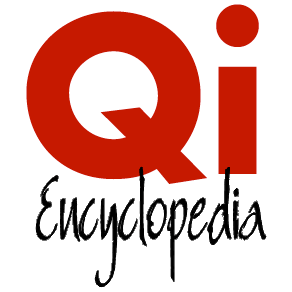
sponsor: Qi Journal
Navigation:
Portals
article: Qi in Qigong | date: 2023-11-22 10:18:08 | Find articles by this author
|
|
Qi in Qigong?By John Voigt
Qigong (or chi kung) - literally Life Energy Exercises. Pronounced
The basic forms of qi in qigong are Yuan “Original” - Zheng “Righteous” - Zhen “True” and Jing “Essence.” Original Genetic Qi. Yuan qi (元气 – also called “Prenatal” or “Ancestral”). The qi that governs our individualized growth from the moment of conception onwards. It is somewhat analogous to DNA. Each of us is born with a certain amount of Original (Yuan) Qi that is slowly used up by the process of living. If there is not enough of it to sustain our well-being, we get sick and die. Qigong offers ways to slow the loss of Yuan Qi. Healthy Qi. Zheng qi (正气 – literally “Righteous Life Energy,” but also “Upright” or “Proper” or more colloquially “Good qi.” This energy is acquired from food and air, and metabolized for use by the “Original (Yuan) Qi” derived from the sperm fertilized egg of the mother. Basic healthy living, and practicing Qigong strengthens Zheng Qi, which counteracts pathogenic conditions in the body. The term Healthy (Zheng) Qi is often used interchangeably with True (Zhen) Qi. True Qi. Zhen qi (真气 – also translated as “Real,” or “Actual”). Both Zhen (Righteous) Qi and Zheng (Upright) Qi refer to the energy acquired from food and air after it is acted upon (catalyzed) by the “original - genetic qi.” However True Qi additionally means that all forms of qi are in correct alignment and flowing properly in the organs and energy meridians.[2] Zhen Qi [True Qi] circulating in the main and collateral channels is referred to as the Qi of the channels, abbreviated as Jing [“Essential”] Qi in Chinese.[3] Essential Qi. Jing Qi (精气). Jing literally means “Essence.” Jing itself is an amazingly complex term with many related meanings but here Jing alone is to be understood as an highly perfected subtle energetic potentiality that is manifested in the human body as Jing Qi. Jing Qi is the Essential Vital Energy of Life, and as such offers an answer to the question of what is Qi in Qigong. References Notes
Bibliography Martin Eisen Ph.D. & Kevin Chen Ph.D. "The Concept of Qi, Part 1." http://www.selfgrowth.com/articles/the-concept-of-qi-part-1 Claudia Focks. “Qi Circulation and the Channel System” p. 5-8 [in] Atlas of Acupuncture. Publisher: Churchill Livingstone, 2008. [at] http://books.google.com/books "Qigong." http://en.wikipedia.org/wiki/Qigong Wang Xuanjie & J.P.C. Moffett. Traditional Chinese Therapeutic Exercises – Standing Pole. Foreign Languages Press, 1994. |

